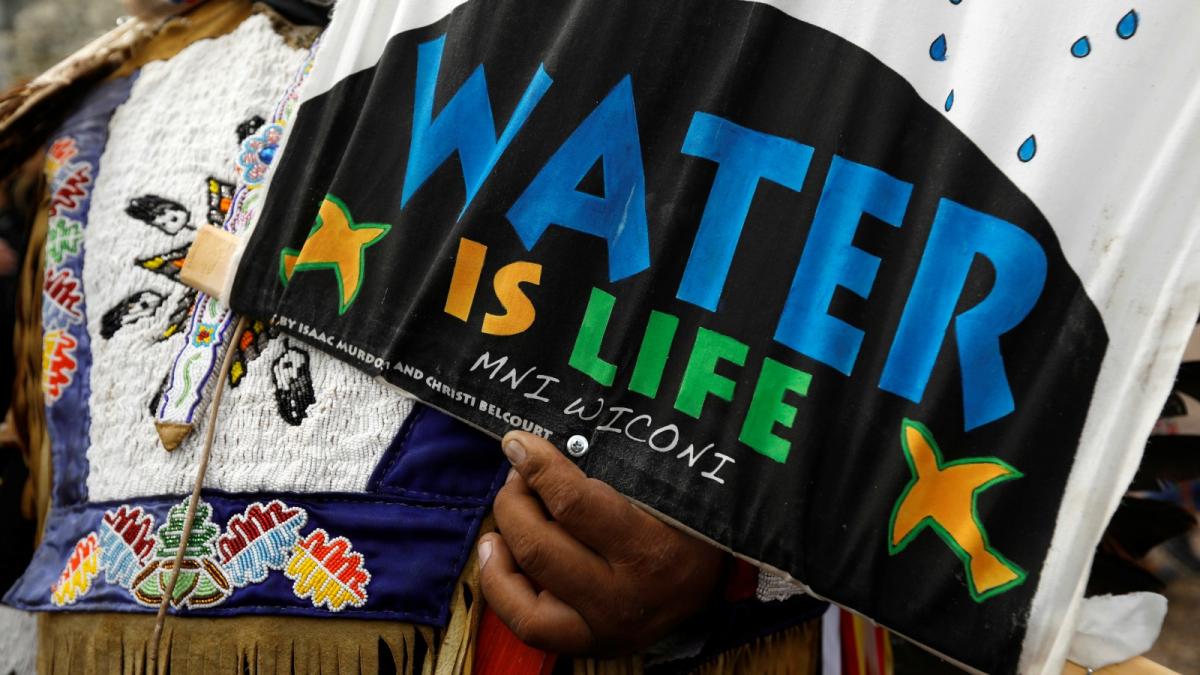The Lakota phrase “Mní wičhóni,” or “Water is life,” has become a new national protest anthem.
It was chanted by 5,000 marchers at the Native Nations March in Washington, D.C., on March 10, and during hundreds of protests across the United States in the last year. “Mní wičhóni” became the anthem of the almost year-long struggle to stop the building of the Dakota Access Pipeline under the Missouri River in North Dakota.
This chant mirrors the civil rights anthems of the past, which emerged out of the African-American church. “Mní wičhóni” in the Lakota language also has spiritual meaning, which is rooted in a connection to nature. As a Native American scholar of environment and religion, I understand what makes the relationship between Native people and the natural world unique.
For Native Americans, water does not only sustain life — it is sacred.
Water and the American WestThe Great Plains of North America, home to the Lakota, the Blackfeet, and other tribes, is a dry, arid place. The U.S. government spends billions of dollars to control and retain water in this “Great American desert,” as it was described in the early 19th century.
Geo... Read more


